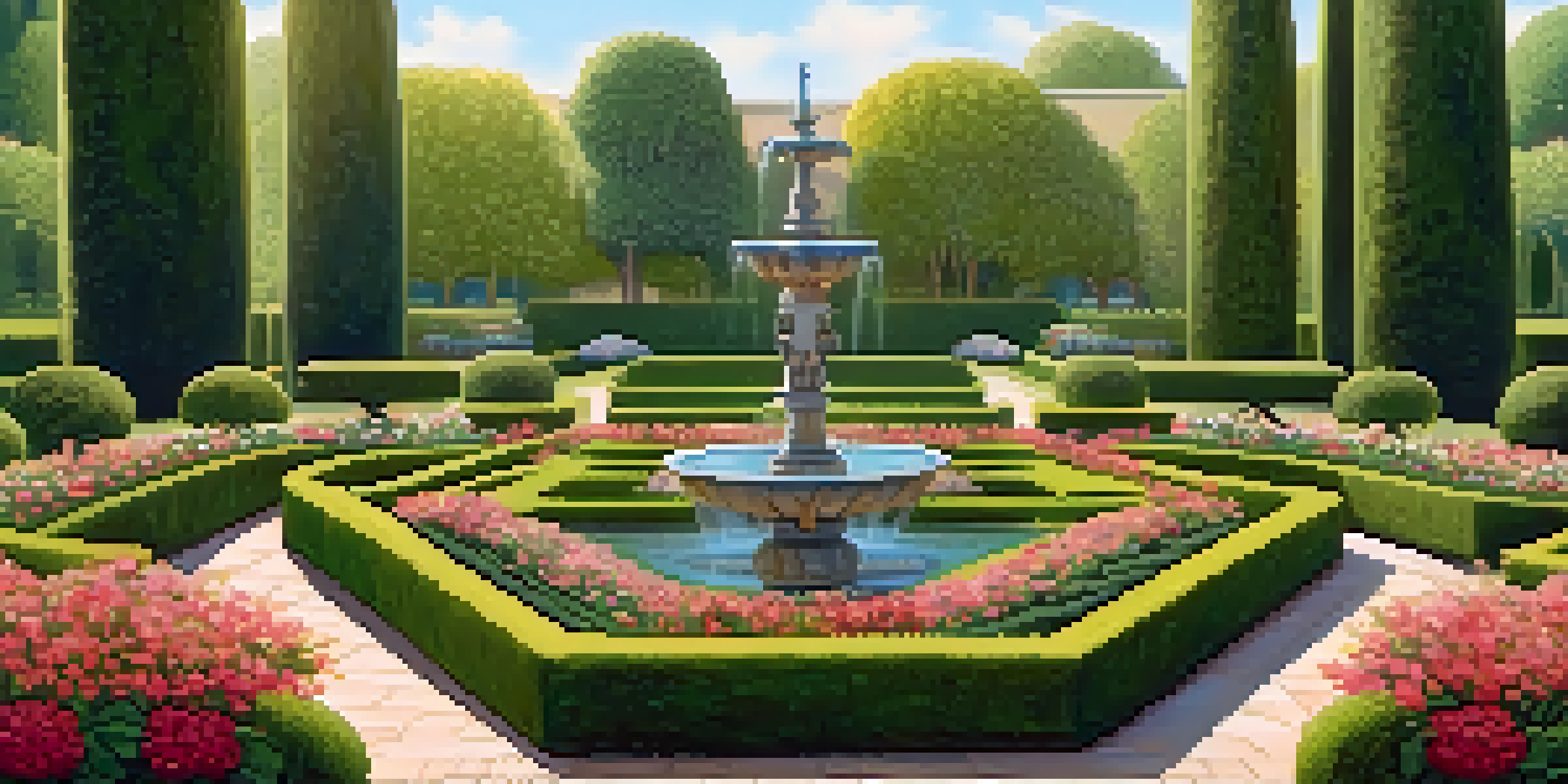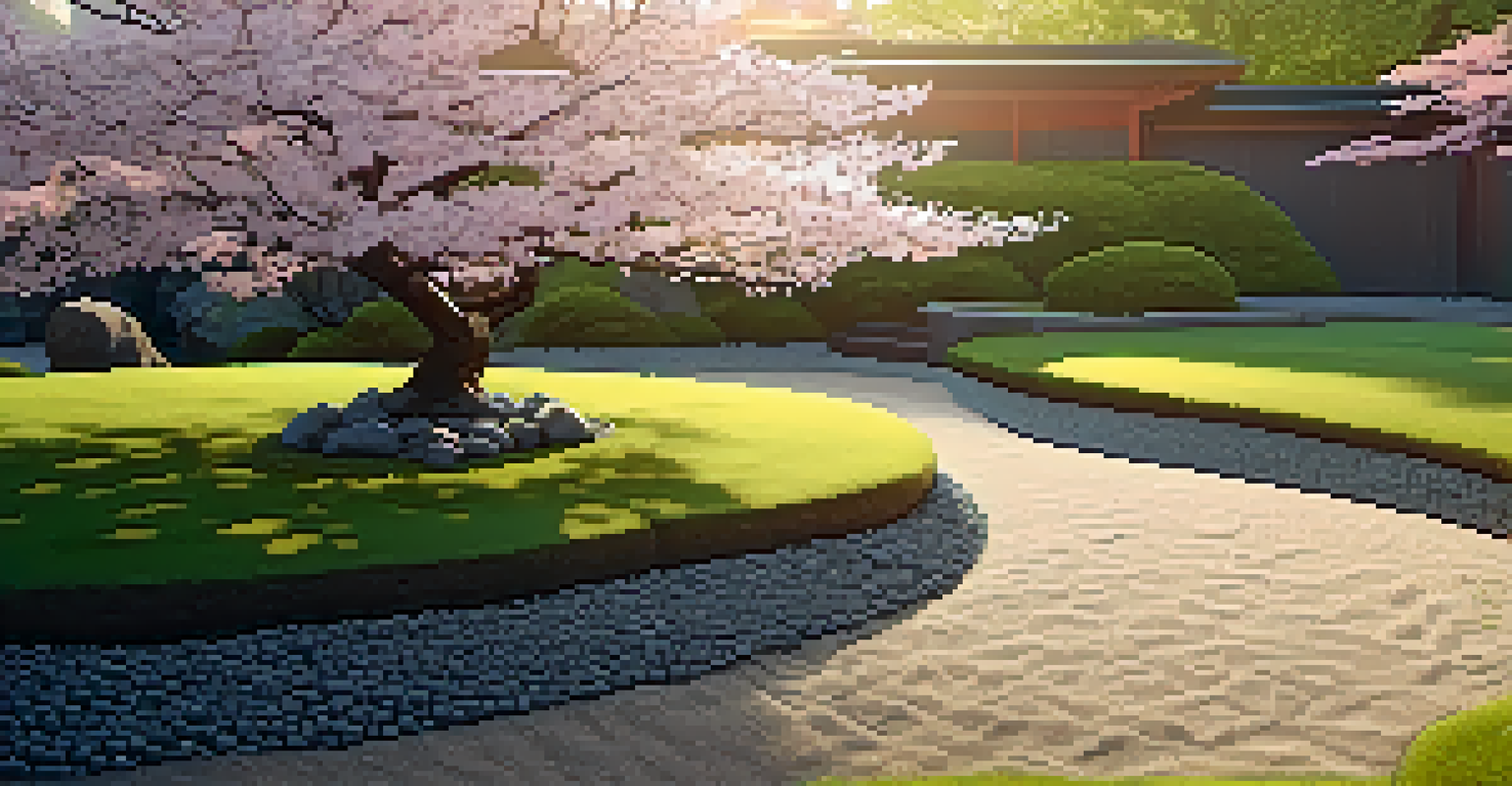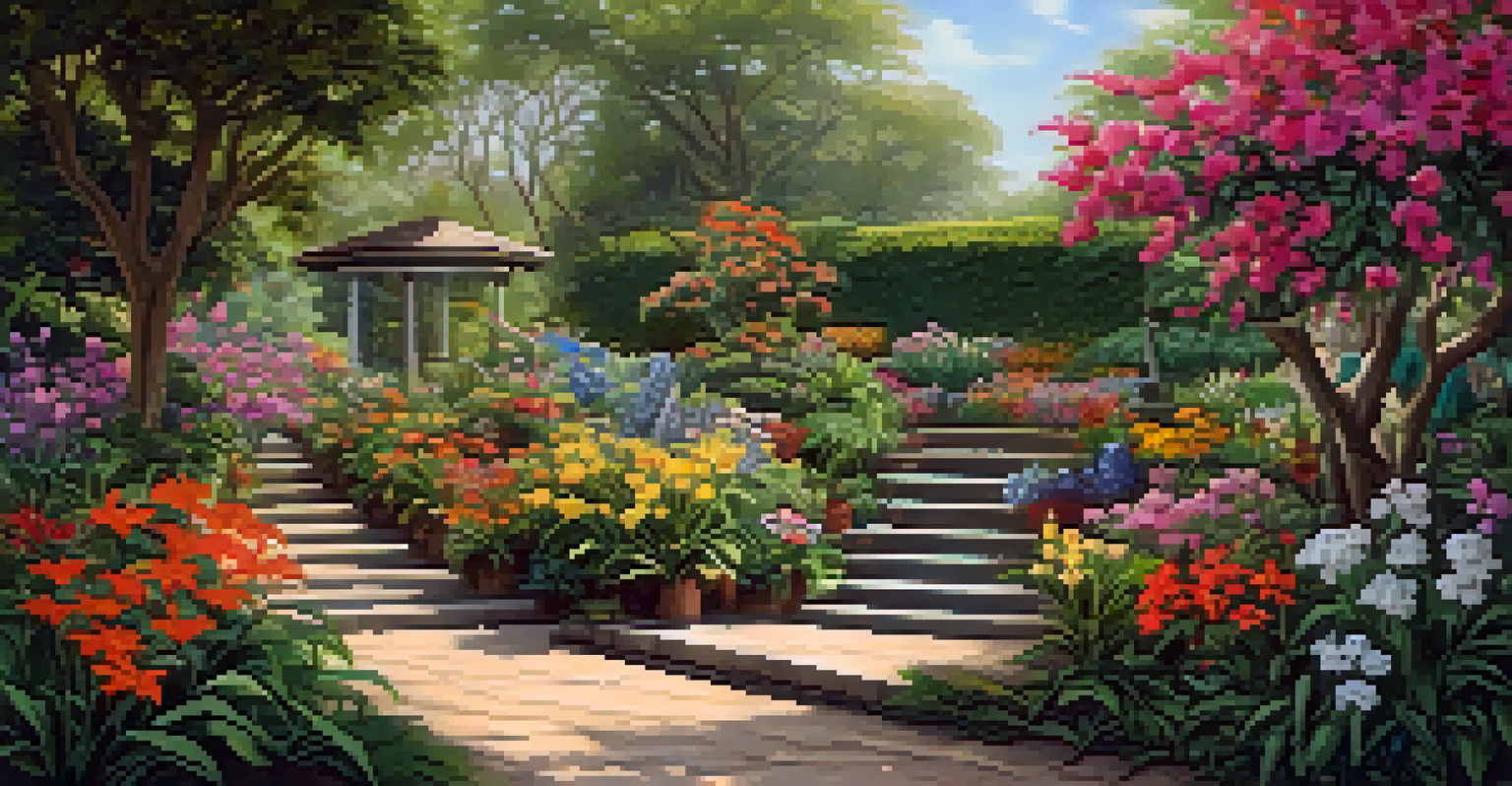Visiting Historical Gardens: A Cultural Experience

The Allure of Historical Gardens in Cultural Heritage
Historical gardens are more than just beautiful landscapes; they are living museums that tell stories of the past. Each garden reflects the culture, values, and artistry of the era in which it was created. As you stroll through these verdant spaces, you can almost hear the whispers of history echoing through the leaves.
Gardens are a form of autobiography, a reflection of the people who created them.
For instance, the intricate designs of a Renaissance garden often symbolize the era's fascination with symmetry and nature. This connection to history invites visitors to appreciate how gardens have evolved alongside society. Understanding the significance behind these designs enriches your experience as you explore the grounds.
Visiting these gardens fosters a deeper appreciation for the cultural heritage they represent. It allows you to connect with the past in a tangible way, reminding us that nature and history are intricately intertwined.
A Journey Through Time: Different Garden Styles
Every historical garden possesses a unique style that reflects its time and place. From the manicured hedges of formal French gardens to the free-flowing designs of English landscapes, each style tells a different story. Exploring these variations can feel like stepping into a time machine, transporting you to a different era.

For example, the Japanese Zen gardens emphasize tranquility and meditation, showcasing how nature can influence philosophical ideals. On the other hand, the vibrant colors and exotic plants of colonial gardens highlight the age of exploration and cultural exchange. Understanding these styles enhances your appreciation for the artistry involved.
Historical Gardens as Living Museums
These gardens serve as dynamic reflections of cultural heritage, intertwining nature with historical narratives.
By immersing yourself in these diverse garden styles, you gain insights into the cultural values and historical contexts that shaped them. This journey through time not only educates but also inspires a greater respect for the natural world.
Gardens as Reflections of Artistic Expression
Historical gardens are often considered a form of artistic expression, much like painting or sculpture. The careful arrangement of plants, flowers, and pathways creates a living canvas that evolves with the seasons. Visitors can appreciate how garden designers use color, texture, and form to evoke emotions and create beauty.
To plant a garden is to believe in tomorrow.
Take the famous Gardens of Versailles, for instance, where every aspect reflects the grandeur of the French monarchy. The carefully aligned trees and elaborate fountains are not just for show; they convey power and control over nature. This artistic intention invites visitors to engage with the space on a deeper level.
When you visit a historical garden, you're not just observing nature; you're experiencing a carefully curated work of art. This realization can change the way you view gardens, fostering a newfound appreciation for the artistic skills involved in their creation.
Connecting with Nature: The Therapeutic Benefits
Spending time in historical gardens offers profound therapeutic benefits that can enhance your well-being. The natural environment promotes relaxation and mindfulness, allowing you to escape the hustle and bustle of daily life. As you wander through the fragrant blooms and shaded pathways, stress tends to melt away.
Research has shown that being in nature can lower blood pressure, reduce anxiety, and improve overall mood. Historical gardens, with their serene settings and beauty, provide the perfect backdrop for this rejuvenation. Many find that a simple walk through these gardens can spark creativity and inspire new ideas.
Diverse Styles Reflect Historical Contexts
Each garden style embodies its unique cultural values and historical significance, offering a journey through time.
In essence, visiting historical gardens is not just about appreciating their beauty; it's also about connecting with nature and cultivating a sense of peace. This therapeutic aspect makes these gardens valuable spaces for both individual reflection and communal enjoyment.
Cultural Events: Engaging with the Community
Many historical gardens host a variety of cultural events that engage the community and celebrate local heritage. From outdoor concerts to art exhibitions, these events breathe life into the gardens, transforming them into vibrant centers of activity. It's a great opportunity to connect with others who share an appreciation for culture and nature.
For instance, some gardens may hold seasonal festivals showcasing regional foods and crafts, allowing visitors to immerse themselves in local traditions. These events not only enhance your garden experience but also foster a sense of community and belonging. Participating in these gatherings can create lasting memories and friendships.
By attending cultural events in historical gardens, you are contributing to the preservation of these spaces. Celebrating the heritage they represent helps ensure that future generations can enjoy and learn from them as well.
The Role of Education in Historical Gardens
Historical gardens serve as educational resources, offering visitors insights into horticulture, history, and art. Many gardens provide guided tours, workshops, and informational plaques that detail the significance of various plants and design elements. This educational aspect enriches your visit, turning a leisurely stroll into a learning experience.
For example, some gardens may have dedicated sections that highlight native plant species or traditional gardening techniques. Understanding these aspects deepens your connection to the garden and encourages sustainable practices in your own life. It's a wonderful way to engage with nature more thoughtfully.
Therapeutic Benefits of Nature
Spending time in historical gardens promotes relaxation and mindfulness, enhancing overall well-being.
Education in historical gardens promotes awareness of biodiversity and conservation. By learning about the delicate balance of ecosystems, visitors can become advocates for preserving these beautiful spaces for future generations.
Planning Your Visit: Tips for an Enjoyable Experience
When planning your visit to a historical garden, consider the best times to go for an optimal experience. Many gardens have specific blooming seasons, and visiting during these times can enhance your appreciation of their beauty. Early morning or late afternoon visits often provide the best lighting for photography and a quieter atmosphere.
Additionally, don’t forget to check for any special events or guided tours that may be happening during your visit. These experiences can offer unique insights and enrich your understanding of the garden's history. Being prepared can make your visit more enjoyable and fulfilling.

Lastly, remember to take your time as you explore the garden. Allow yourself to wander, savor the sights and scents, and engage with the environment. This leisurely approach will help you fully appreciate the cultural experience that historical gardens have to offer.